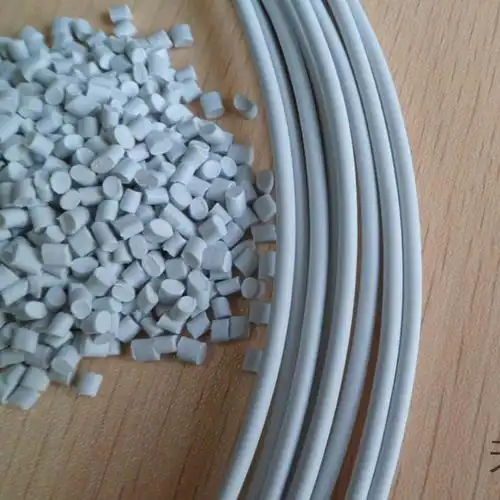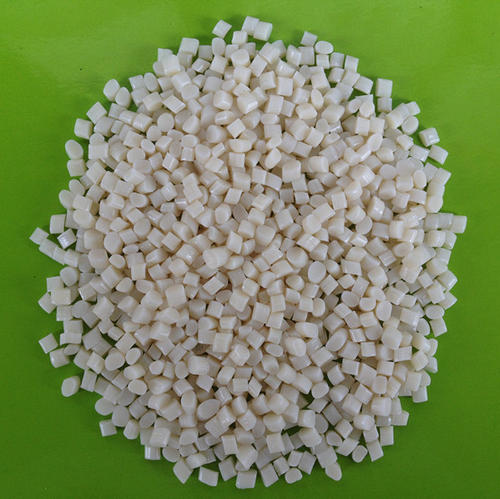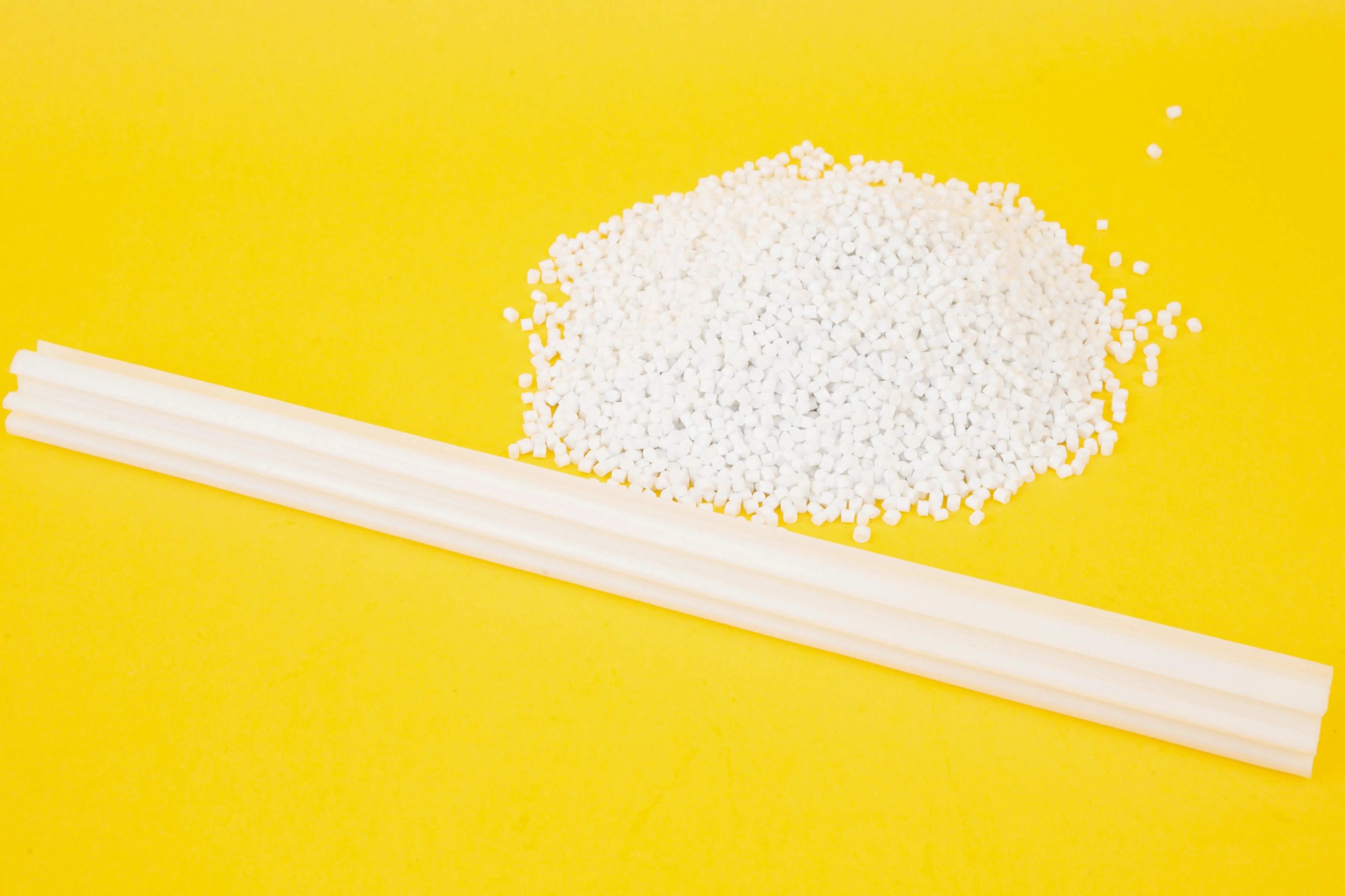As someone who’s been knee-deep in the world of thermoplastic elastomers (TPEs) for over a decade, I’ve wrestled with my fair share of molding challenges. One of the most frustrating issues is sticking in the mold—when your beautifully designed TPE part refuses to pop out cleanly, slowing production and driving up costs. It’s a problem that can make even seasoned engineers groan, but it’s not insurmountable. In this article, I’ll share practical solutions to tackle TPE sticking issues during processing and molding, drawn from years of trial, error, and hard-won successes. Whether you’re working on soft grips, medical tubing, or automotive seals, these tips will help you keep your production line humming.

Why Does TPE Stick to Molds?
Before jumping into solutions, let’s unpack why TPEs stick in the first place. TPEs are unique because they combine the elasticity of rubber with the processability of plastics. This dual nature, while a strength, can lead to sticking due to their tacky surface, high flexibility, or chemical interactions with the mold. From my experience, sticking often stems from:
Material properties: TPEs with high soft-segment content, like SEBS or TPU, tend to be tackier and more prone to sticking.
Mold surface: Smooth or unpolished molds can create a vacuum effect, gripping the TPE too tightly.
Processing conditions: Incorrect temperatures, pressures, or cooling times can exacerbate adhesion.
Mold design: Complex geometries or insufficient draft angles can trap parts in the mold.
I recall a project early in my career where we were molding TPE gaskets for a consumer appliance. The parts kept sticking, leaving residue in the mold and causing defects. After some digging, we found the culprit was a combination of an overly smooth mold surface and a TPE formulation that was too tacky. Let’s dive into how to address these issues systematically.
Strategies to Prevent TPE Sticking
1. Optimize TPE Formulation
The first place to look is the TPE itself. The material’s composition plays a huge role in its mold-release behavior. Here are some ways to tweak the formulation:
Reduce tackiness with additives: Adding release agents like silicone or fluoropolymer-based compounds (0.5-2% by weight) can lower surface tack. In one project, we added 1% silicone additive to a SEBS-based TPE, which cut sticking incidents by 80%.
Adjust soft-segment content: TPEs with high soft-segment ratios are stickier. Working with your supplier to reduce soft-segment content or blend with stiffer polymers like polypropylene can help.
Use mold-release coatings: Some TPEs can be formulated with internal mold-release agents that migrate to the surface during molding, easing part ejection.
A word of caution: overusing release agents can affect the TPE’s mechanical properties or cause surface defects like blooming. Always test small batches first. I learned this the hard way when a client’s TPE grips started showing white residue after adding too much release agent—testing saved us from a costly recall.

2. Modify Mold Surface and Design
The mold itself is often half the battle. A poorly designed or maintained mold can turn a well-formulated TPE into a sticky nightmare. Here’s what to focus on:
Surface texture: Polished molds can create a suction effect with TPEs. Adding a light texture (e.g., EDM finish or sandblasting) increases surface roughness, reducing adhesion. A Ra value of 0.8-1.2 µm often works well.
Mold coatings: Applying coatings like PTFE, nickel-PTFE, or chromium can reduce sticking. In a project for medical tubing, we applied a PTFE coating to the mold, which dropped ejection force by 30%.
Draft angles: Ensure draft angles are at least 1-2 degrees for TPEs. Smaller angles can trap parts, especially in deep cavities.
Ventilation: Proper mold venting prevents air entrapment, which can cause parts to stick. Check that vents are clean and sized correctly (0.02-0.05 mm for TPEs).
I once worked on a TPE phone case mold that kept jamming. Switching to a textured mold surface and increasing the draft angle from 0.5° to 1.5° made all the difference. If you’re retrofitting an existing mold, start with surface texture—it’s often the easiest fix.
3. Fine-Tune Processing Conditions
Processing parameters are critical for TPEs. Get these wrong, and you’ll be scraping parts out of the mold. Here’s a breakdown of key variables:
|
Parameter |
Optimal Range |
Impact on Sticking |
Tips |
|---|---|---|---|
|
Melt Temperature |
180-220°C (SEBS), 190-230°C (TPU) |
Too high: increases tackiness; too low: poor flow |
Adjust in 5°C increments, monitor part quality |
|
Mold Temperature |
20-50°C |
Too hot: prolongs cooling, increases sticking |
Use cooling channels for consistency |
|
Injection Pressure |
50-100 MPa |
Too high: forces TPE into mold crevices |
Optimize for fill without overpacking |
|
Cooling Time |
10-30 seconds |
Too short: parts remain tacky |
Extend slightly for complex geometries |
In one case, we were molding TPE seals for an automotive client. The parts stuck because the mold temperature was too high (60°C), keeping the TPE tacky. Dropping it to 30°C and extending cooling time by 5 seconds solved the issue without slowing the cycle significantly. Always monitor barrel and mold temperatures closely—small tweaks can yield big results.
4. Use External Mold Release Agents
Sometimes, internal additives aren’t enough, and you need an external mold release agent. These are applied directly to the mold surface and can be a game-changer:
Silicone-based sprays: Effective for most TPEs but can leave residue, so use sparingly.
Water-based releases: Eco-friendly and less likely to affect surface finish, ideal for medical or food-contact applications.
Fluoropolymer-based releases: Long-lasting but more expensive, great for high-volume production.
I’ve found that applying a thin layer of water-based release agent every 50-100 cycles works well for SEBS parts. Just be sure to clean the mold regularly to prevent buildup, which can cause defects. In a project for TPE grips, we switched to a fluoropolymer release agent for a high-run job, and it cut downtime by half.

5. Maintain and Clean Molds Regularly
A dirty or worn mold is a sticking magnet. TPEs can leave residues, especially if overheated or if additives bloom. Here’s how to keep molds in top shape:
Regular cleaning: Use mild solvents or ultrasonic cleaning to remove TPE residue. Avoid abrasive methods that damage mold surfaces.
Inspect for wear: Check for scratches or worn coatings that can increase sticking. Reapply coatings as needed.
Lubrication: For moving parts like ejector pins, use minimal lubrication to avoid contaminating the TPE.
I once inherited a mold that hadn’t been cleaned in months. TPE residue had built up, causing parts to stick like glue. A thorough ultrasonic cleaning and a fresh PTFE coating turned things around. Schedule mold maintenance like it’s a sacred ritual—it pays off.
Practical Tips for Consistent Results
Over the years, I’ve developed a few habits that make TPE molding smoother:
Start with a baseline: Use supplier-recommended processing parameters as a starting point, then adjust based on trial runs.
Document everything: Keep detailed records of formulations, mold settings, and processing conditions. This saved me when we had to replicate a successful TPE run for a client years later.
Collaborate with suppliers: Your TPE supplier can recommend formulations or additives tailored to your mold and application.
Run small-scale tests: Before committing to full production, test new formulations or mold changes on a pilot line. It’s cheaper to fail small.
Balancing Sticking Solutions with Other Requirements
Fixing sticking issues can sometimes create new challenges. For example, adding too much release agent might affect paint adhesion or cause surface defects. In a project for TPE medical tubing, we used a silicone additive to reduce sticking, but it interfered with the tubing’s clarity. Switching to a lower concentration (0.8%) and optimizing mold texture fixed the issue without compromising aesthetics. Always consider how changes affect the final product’s performance, like elasticity, clarity, or regulatory compliance.
Real-World Examples
To ground this in reality, here are a few cases where we tackled sticking issues:
TPE shoe soles: The soles stuck due to high injection pressure packing the material into mold crevices. Reducing pressure by 10 MPa and adding a light EDM texture to the mold solved it.
Medical device grips: A TPU-based grip was too tacky. Adding 1% fluoropolymer release agent and lowering mold temperature to 25°C improved release without affecting biocompatibility.
Automotive seals: A TPV seal stuck in a complex mold. Increasing draft angles to 2° and applying a nickel-PTFE coating reduced sticking and improved cycle time.

Wrapping Up
Dealing with TPE sticking in molds can feel like a battle, but with the right approach, it’s one you can win. By optimizing your TPE formulation, tweaking mold design, fine-tuning processing conditions, and maintaining your equipment, you can keep parts popping out cleanly. My years in the industry have taught me that persistence and attention to detail are everything—whether it’s testing a new additive or scrubbing a mold until it shines. If you’re hitting sticking issues, don’t despair. Start with small, targeted changes, and lean on your suppliers and team for support. A smooth-running molding process is worth the effort.
Related Questions and Answers
Q: Can I use the same mold release agent for all TPE types?
A: Not always. Silicone-based agents work well for SEBS and TPU, but TPVs might need fluoropolymer-based agents for better results. Test the agent with your specific TPE and application to avoid compatibility issues.
Q: How often should I clean my molds when processing TPEs?
A: It depends on the TPE and production volume. For high-tack TPEs, clean every 500-1000 cycles or when you notice residue buildup. Regular inspections help catch issues early.
Q: What if my mold is too old to modify?
A: If retrofitting isn’t an option, focus on formulation (add release agents) and processing (lower temperatures, optimize cooling). You might also try external release agents as a stopgap, but consider investing in a new mold for long-term efficiency.
Q: Are there eco-friendly mold release options for TPEs?
A: Yes, water-based release agents are a great choice. They’re less likely to leave harmful residues and are suitable for applications like medical or food-contact parts. Always verify compliance with your industry standards.





